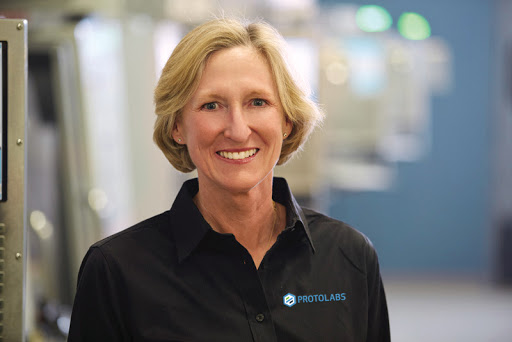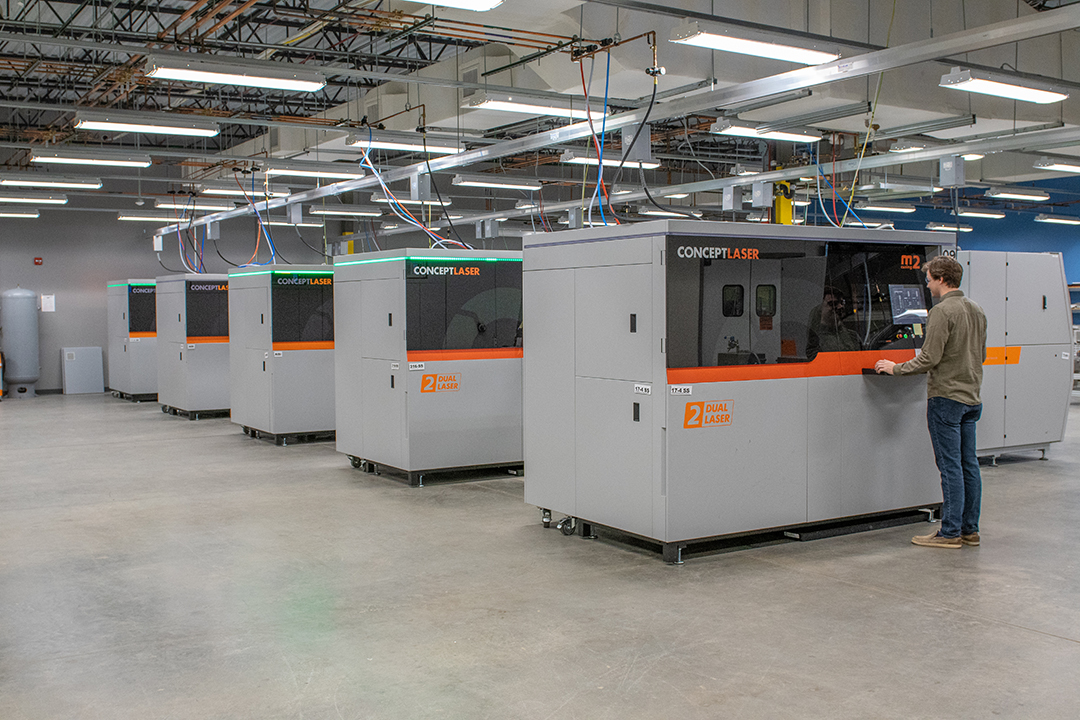Minnesota-headquartered on demand digital manufacturing provider Protolabs, Inc. (NYSE:PRLB), has announced its financial earnings for the first quarter of 2020.
The company’s headline revenue totalled $115.1 million, an increase of 1.5 percent over Q1 2019 where Protolabs reported $113.5 million in revenue. The company’s 3D printing segment experienced further growth for Q1 2020 compared to last year’s record-setting quarter for Q1 2019.
Much of Protolabs’ financial results and earnings call centered on the impact of the global coronavirus crisis, and the company’s internal and external response to the COVID-19 pandemic. “As Protolabs confronts the immediate challenges of the COVID-19 pandemic, our top priority is the health and safety of our employees, communities, and customers,” comments Vicki Holt, President and Chief Executive Officer of Protolabs. “We continue to serve our customers during these uncertain times, and are thankful that we are able to be a part of the solution.”
“I am very proud of the dedicated Protolabs employees,” Holt continued, “who continue to support our customers and manufacture parts with critical applications in the fight against the Coronavirus.”

Protolabs revenue
Protolabs revenue is reported across four main manufacturing services, constituting its segments: Injection Molding, CNC Machining, 3D Printing and Sheet Metal.
Injection Molding and CNC Machining usually account for the largest shares of revenue reported by the company.
Amounting to almost half of Protolabs total revenue, Injection Molding was reported at $54.8 million for Q1 2020, a 0.97 percent difference compared to Q1 2019’s figure of $55.3 million. CNC Machining remained flat, with the Q1 2020 revenue reported at $37.9 million, the same figure for the first quarter in 2019.
The 3D Printing segment experienced an obvious growth however, with the Q1 2020 revenue coming in at $15.9 million. This figure represents a 10.14 percent increase compared to the revenue for the same period last year.
Finally, Sheet Metal, accounting for the lowest total revenue, also experienced a growth of 12.42 percent at $5.6 million for Q1 2020. Last year for Q1 2019, this figure was $5 million.
| Revenues | Q1 2020 | Q1 2019 | Variance $ millions | % |
| Injection Molding | 54,776 | 55,311 | -535 | -0.97% |
| CNC Machining | 37,885 | 37,872 | 13 | 0.03% |
| 3D Printing | 15,948 | 14,480 | 1,468 | 10.14% |
| Sheet Metal | 5,649 | 5,025 | 624 | 12.42% |
| Other | 850 | 764 | 86 | 11.26% |
| Total revenue | 115,108 | 113,452 | 1,656 | 1.46% |
Geographically, the U.S. was Protolabs’ strongest region for revenue. For Q1 2020, revenue from the U.S. was reported at $90 million, compared to $87.8 million in Q1 2019. In Europe, Q1 2020 revenue decreased 2.2 percent to $20.8 million compared to $21.25 million in Q1 2019. Japan experienced a 3.24 percent decrease in Q1 2020 to $4.2 million, compared to $4.4 million in Q1 2019.
| Revenue | Q1 2020 | Q1 2019 | Variance $ millions | % |
| United States | 90,076 | 87,811 | 2,265 | 2.58% |
| Europe | 20,787 | 21,254 | -467 | -2.20% |
| Japan | 4,245 | 4,387 | -142 | -3.24% |
| Total Revenue | 115,108 | 113,452 | 1,656 | 1.46% |
Holt explains that initially, financial performance and ordering trends were in-line with the company’s expectations. However, as the COVID-19 pandemic intensified, economic activity declined, and ordering activity slowed. This dip was offset by various orders for essential parts related to the COVID-19, Holt explains: “In the last week of March, we began to receive orders for COVID-19 related parts—primarily injection molding in the Americas—which helped mitigate the slowdown in other services and regions. In the midst of this unprecedented uncertainty, we were able to deliver essential parts to our customers and achieve strong financial performance.”
With its business model and vision focused on digital manufacturing, e-commerce and supply, Holt believes Protolabs will be able to manage the challenges presented by the coronavirus crisis, while other firms begin the process of digitization themselves: “Based on conversations I’ve been having with business leaders, it is clear this pandemic is causing manufacturers to consider changes going forward, which present favorable conditions for Protolabs. This pandemic is going to accelerate the digitization of manufacturing and the openness and preference manufacturers have to conduct business through e-commerce”
“We are confident that our ecommerce digital manufacturing business model will thrive as manufacturing adapts in response to this pandemic.”

Although 3D printing was impacted by the COVID-19 pandemic, the business still produced a strong revenue growth. During the earnings call, John Way, CFO at Protolabs, partly attributed the growth to the company’s metal 3D printing operations: “We did produce 10% growth in our 3D printing in the first quarter despite the COVID impact and metal was a strong contributor there.”
Recently, Protolabs announced it planned to introduce GE Additive’s X-Line 2000R large-format metal 3D printers into its equipment portfolio in late summer 2020. Holt explains that the machine was acquired to help meet customer demand for large metal components: “It is a machine that allows us to make larger parts. So it’s just got a much larger build platform to it that allows us to make bigger parts and customers, particularly in the aerospace and satellite, space segment are looking at large – and frankly also industrial segments are looking for larger parts.”
COVID-19 response
In its COVID-19 response, Protolabs has outlined several commitments. It will remain fully operational as an essential business, and prioritize COVID-19 related orders and customer needs. The company has received a number of COVID-19 related orders for applications including components for lifesaving equipment, diagnostic systems, and personal protective equipment (PPE).
“We’ve provided thousands of injection molded face shield headbands to Zverse in order to protect healthcare workers on the front lines of the battle against COVID-19. Protolabs also produced components for major medical device companies for the production of ventilators. Additionally, we’ve machined parts for an innovative affordable ventilator concept designed by a University of Minnesota Cardiac Anesthesiologist,” explained Holt.
To protect its employees, Protolabs has implemented new cleaning and sanitizing standard operating procedures and social distancing at its manufacturing facilities. Meanwhile, its non-manufacturing employees have transitioned to a remote work environment. Additionally, Protolabs Foundation has accelerated annual STEM education grants to provide food and technology needs during distance learning.
Moving forward, with the uncertainty that the pandemic has brought for businesses all over the world, Protolabs has prepared a contingency plan for a range of different scenarios. The company will continue to push and develop Protolabs 2.0, the company’s project to enhance and evolve its systems and processes.
“The ultimate financial impact of the COVID-19 pandemic is unknown at this time. We will continue to monitor demand levels and prudently manage expenses during this time,” comments Way. “The health of our balance sheet and the strength of our unique digital manufacturing model allow us to manage through these challenging times, deliver exceptional value to our customers, and provide long term benefits to our stakeholders.”
The nominations for the 2020 3D Printing Industry Awards are now open. Who do you think should make the shortlists for this year’s show? Have your say now.
Subscribe to the 3D Printing Industry newsletter for the latest news in additive manufacturing. You can also stay connected by following us on Twitter and liking us on Facebook.
Looking for a career in additive manufacturing? Visit 3D Printing Jobs for a selection of roles in the industry.
Featured image shows a CNC machining plant at Protolabs. Photo via Protolabs.


